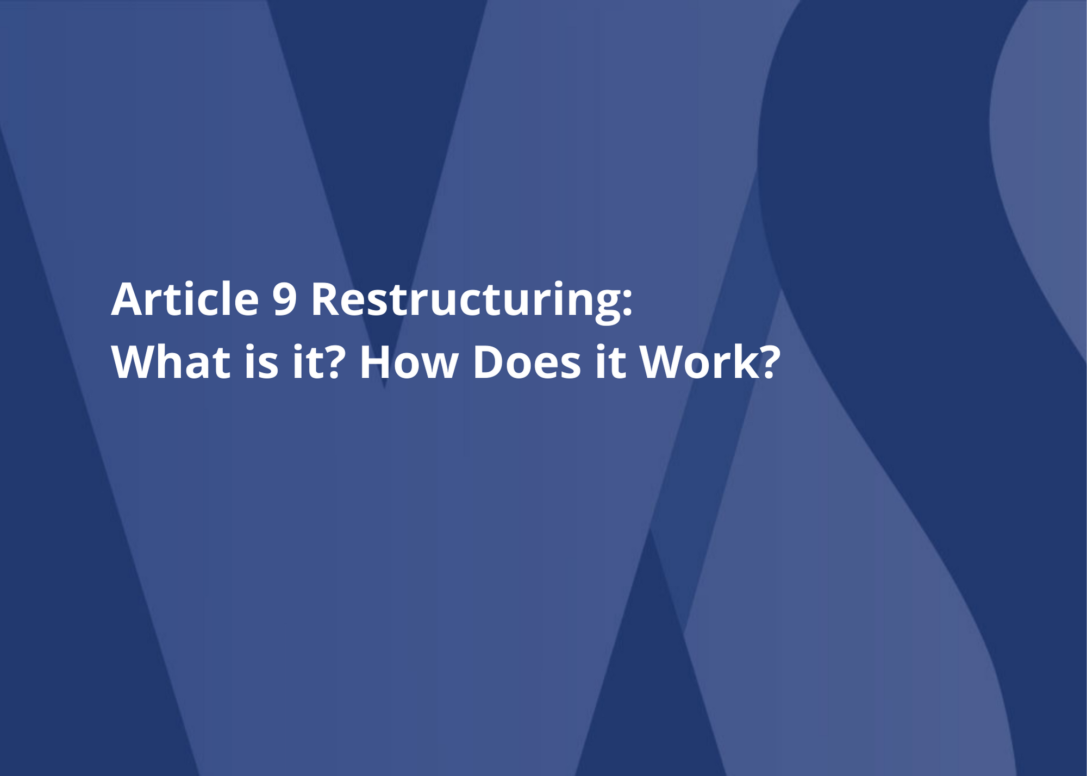For CPAs, CFOs and other trusted advisors, understanding this path when a client is faced with insolvency is important.

Business debt relief under UCC Article 9 involves an out-of-court, cooperative restructuring that preserves a business operation in a new, debt-free operating entity, as reported by Bloomberg Businessweek and ABF Journal.
Specifically, an Article 9 restructuring involves an asset sale, conducted cooperatively between a business owner and the bank, to give the business a clean balance sheet in a new legal entity. Given the alternative of closure and liquidation, business debt relief through an Article 9 restructuring benefits creditors as well; who will recover more when a business is preserved and relaunched, than they would if it were liquidated. This is why the Article 9 restructuring is generally a cooperative process, netting a higher recovery value for creditors, and benefiting all parties over the alternative.
Context is important in order to understand why the bank would (perhaps counter-intuitively) cooperate in a process that removes debt from a business. It’s important to remember that when a bank liquidates a business, this is a last resort. Not only do banks recover very little from auctioning off used business assets, but they must spend time and money in order to do so. Recovery value is nominal and uncertain.
Furthermore, it is very often the case that a deficiency balance will remain after liquidation. There is commonly a personal guaranty on any remaining deficiency, leaving former business owners forced to meet the liability personally or file a personal Chapter 7 bankruptcy. When a business is liquidated, creditors left with personal guaranties benefit very little when their guarantor has become personally insolvent. Very often, these defaulted loans are “charged off” to a third-party debt collector, with creditors, again, recovering pennies on the dollar.
Through the Article 9 restructuring process, the business operation is transferred into a new legal, debt-free entity. Business debt remains behind in the previous (and insolvent) operating entity. By result, the business is separated from the debt, and therefore, the distress threatening its viability. This gives the business a real second chance, and gives creditors the chance to recover more than they would in the alternative scenario of closure and liquidation.
Debt relief through a UCC Article 9 restructuring might be considered a kind of compromise in this context. By removing debt from the business, the bank’s guarantors will continue to earn. In that way, personal guaranties on loans removed from the business can be settled in a way that is affordable, but also in excess of what the bank would recover if the business failed.
Is This Bankruptcy? No.
Restructuring under UCC Article 9 can be understood as an alternative to bankruptcy. Unlike a bankruptcy filing, the Article 9 process is out-of-court, does not require lawyers, and is executed as a private negotiation between borrower and lender. A little more context is required here as well.
In a Chapter 11 bankruptcy filing, the intended outcome is the preservation of the business and full repayment to all secured creditors. The business submits a plan to repay its obligations over a five-year period. The system was designed to give an overleveraged business a second chance, while also facilitating recovery for creditors, but there is a glaring problem: It doesn’t work very well. The vast majority of small and medium-sized businesses stand very little chance of successfully completing a Chapter 11 plan. There are many reasons for this, including the expense, time and loss of control over operations.
Approximately 90 percent of small and medium-sized businesses (SMBs) who attempt a Chapter 11 plan will fail, being kicked out and often converted to a Chapter 7 liquidation. From the bank’s point of view, this is the worst of outcomes. Not only are they back in the liquidation scenario, but they had to incur even more expense and time in the process. So when a business owner attempts a Chapter 11 plan as a last resort, despite the considerable expense and low likelihood of success, the bank is forced to invest further time and money.
A Cooperative Solution Preserves the Business: Debt Relief Through Article 9 Restructuring.
With borrower consent (from the business owner), the bank can elect not to liquidate at auction, but instead to ‘sell’ the assets into a new operating entity. Typically, this restructuring will involve an ‘asset-based loan’ to facilitate the purchase of the business assets from the bank.
In the process, all other debt is removed from the business operation, as it is given a clean balance sheet. Only the business assets and operations transfer into the new operating entity.
Simply put, think of it as the bank selling the assets to the new entity, rather than at auction. When assets are liquidated at auction, the business is ended. When assets are sold into a new operating entity, the business is preserved. A preserved business can keep producing value, and this is how even creditors benefit from a UCC Article 9 restructuring of an otherwise insolvent business.
Personally guarantied debts may still remain in the old operating entity, along with other unsecured debts, vendor debts, etc. But by preserving the guarantor’s business, and their ability to earn from it, all creditors can recover more through reasonable settlements, than they would if the business were liquidated. Beyond that, there is an obvious benefit to vendors who preserve relationships with the business, and to employees who preserve their jobs.
In Conclusion
Debt relief through a UCC Article 9 restructuring can be understood as a cooperative solution designed to preserve a business and benefit all parties over the alternative of closure and liquidation. UCC Article 9 restructurings arose as an out-of-court alternative to bankruptcy, whereas bankruptcy has failed both creditors and owners the majority of the time. By providing for a cooperative solution, Article 9 relief can ensure the survival and renewal of a business, while also ensuring creditors recover more than they would in liquidation.

